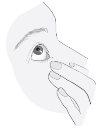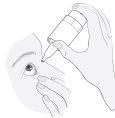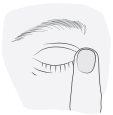
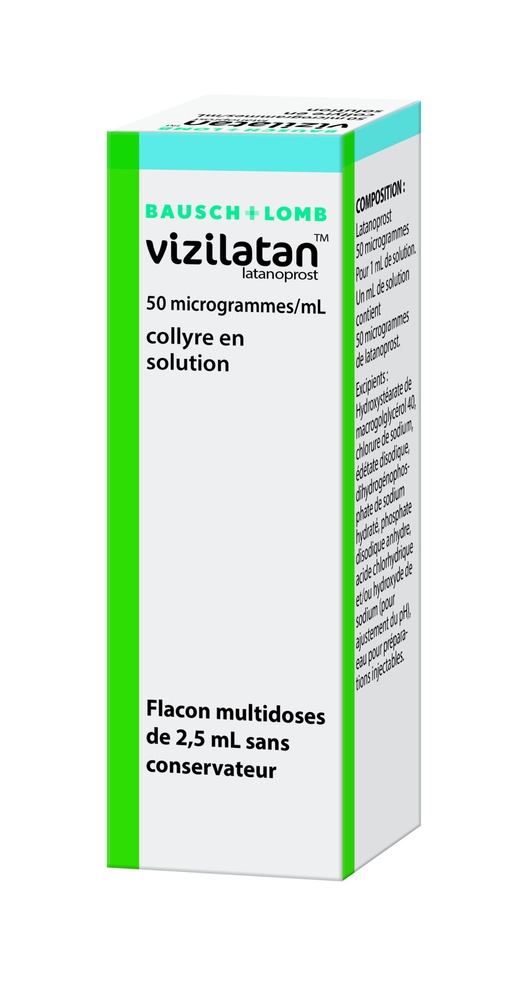
VIZILATAN 50 microgramas/ml colírio em solução

Pergunte a um médico sobre a prescrição de VIZILATAN 50 microgramas/ml colírio em solução

Como usar VIZILATAN 50 microgramas/ml colírio em solução
Introdução
Vizilatan 50microgramas/ml colírio em solução
latanoprosta
Leia todo o folheto detenidamente antes de começar a usar este medicamento, porque contém informações importantes para si.
- Conservar este folheto, porque pode ter que voltar a lê-lo.
- Se tiver alguma dúvida, consulte o seu médico, o médico que está a tratar o seu filho ou o farmacêutico.
- Este medicamento foi prescrito para si ou para o seu filho e não deve dá-lo a outras pessoas, embora tenham os mesmos sintomas, porque pode prejudicá-las.
- Se si ou o seu filho apresentarem algum efeito adverso, consulte o seu médico, o médico que está a tratar o seu filho ou o farmacêutico, mesmo que se trate de efeitos adversos que não aparecem neste folheto. Ver secção 4.
Conteúdo do folheto
- O que é Vizilatan e para que é utilizado
- O que precisa saber antes de começar a usar Vizilatan
- Como usar Vizilatan
- Possíveis efeitos adversos
- Conservação de Vizilatan
- Conteúdo do envase e informações adicionais
1. O que é Vizilatan e para que é utilizado
Vizilatan pertence a um grupo de medicamentos conhecidos como análogos de prostaglandina. Actua aumentando o fluxo de saída natural de líquido desde o interior do olho para o torrente sanguíneo.
Este medicamento é utilizado para tratar o glaucoma de ângulo abertoe a hipertensão ocularem adultos. Estas duas afecções podem apresentar-se juntas, com o que se produziria um aumento da pressão intraocular que pode chegar a afetar a visão.
Este medicamento também é usado para tratar o aumento da pressão ocular e o glaucoma em bebés e crianças de todas as idades.
Vizilatan pode ser utilizado em homens e mulheres adultos (incluindo pacientes de idade avançada) e em crianças desde o nascimento até aos 18 anos de idade. Vizilatan não foi avaliado em prematuros (nascidos antes das 36 semanas de gestação).
Vizilatan colírio em solução é uma solução estéril que não contém conservantes.
2. O que precisa saber antes de começar a usar Vizilatan
Não useVizilatan:
- Se é alérgico a latanoprosta ou a qualquer um dos outros componentes deste medicamento (indicados na secção 6).
Advertências e precauções
Se considera que alguma das seguintes situações o afeta a si ou ao seu filho, consulte o seu médico, o médico que está a tratar o seu filho ou o farmacêutico antes de utilizar Vizilatan ou antes de administrá-lo ao seu filho:
- Se si ou o seu filho vão ser submetidos ou foram submetidos a cirurgia ocular (incluindo a cirurgia de catarata).
- Se si ou o seu filho padecem problemas oculares (tais como dor no olho, irritação ou inflamação, visão borrosa).
- Se si ou o seu filho sofrem de olho seco.
- Se si ou o seu filho padecem asma grave ou a asma não está bem controlada.
- Se si ou o seu filho utilizam lentes de contacto. Podem continuar a utilizar Vizilatan, mas devem seguir as instruções que se incluem na secção 3 para utilizadores de lentes de contacto.
- Se sofreu ou está a sofrer uma infecção vírica do olho causada pelo vírus do herpes simples (VHS).
Outros medicamentos eVizilatan
Este medicamento pode ter interações com outros medicamentos. Informe o seu médico, o médico que está a tratar o seu filho ou o farmacêutico se si ou o seu filho estão a utilizar ou utilizaram recentemente ou pudessem ter que utilizar outros medicamentos (ou colírios), mesmo os adquiridos sem receita. Em particular, fale com o seu médico ou farmacêutico se sabe que está a utilizar prostaglandinas, análogos das prostaglandinas ou derivados das prostaglandinas.
Gravidez e lactação
Gravidez
Não deve usar este medicamento se estiver grávida ou em período de amamentação a menos que o seu médico o considere necessário. Se estiver grávida ou em período de amamentação, acredita que pode estar grávida ou está a pensar em ficar grávida, peça conselho ao seu médico antes de utilizar este medicamento.
Condução e uso de máquinas
Pode experimentar visão borrosa durante um breve período de tempo quando utilizar este medicamento. Se isso lhe acontecer, não conduza nem utilize ferramentas ou máquinas até que recupere novamente a clareza de visão.
Vizilatancontémhidroxiestearato demacrogolglicerol 40
Este medicamento contém hidroxiestearato de macrogolglicerol 40, que pode causar reações na pele.
Vizilatan contém tampão fosfato
Este medicamento contém 0,19 mg de fosfatos em cada gota, o que equivale a 6,79 mg/ml.
Se sofre de dano grave na córnea (a camada transparente da parte frontal do olho) o tratamento com fosfatos, em casos muito raros, podem provocar visão borrosa por acumulação de cálcio.
3. Como usar Vizilatan
Siga exatamente as instruções de administração deste medicamento indicadas pelo seu médico, ou pelo médico que trata o seu filho. Em caso de dúvida, consulte o seu médico, o médico que trata o seu filho ou o farmacêutico.
A dose recomendada para adultos (incluindo os pacientes de idade avançada) e crianças é uma gota no olho ou olhos afetados uma vez ao dia. É preferível que seja administrada à noite.
Não utilize este medicamento mais de uma vez ao dia; a eficácia do tratamento pode diminuir se for administrado com maior frequência.
Utilize este medicamento tal como o seu médico ou o médico que trata o seu filho lhe indicou, até que lhe diga que o suspenda.
Utilizadores de lentes de contacto
Se si ou o seu filho utilizam lentes de contacto, deve retirá-las antes de utilizar este medicamento. Depois da aplicação deste medicamento, deverá esperar 15 minutos antes de voltar a colocar as lentes de contacto.
Instruções de uso
1a
1b |
|
|
|
3 |
|
4 |
|
5 |
|
|
Se usaVizilatancom outros colírios
Espere pelo menos 5 minutos entre a aplicação deste medicamento e a administração de outros colírios.
Se usa maisVizilatando que deve
Se aplicar demasiadas gotas no olho, pode sentir uma ligeira irritação no olho e também pode que o olho fique vermelho e lacrimejante. Esta situação deveria desaparecer, mas se lhe preocupar, contacte o seu médico ou o médico que trata o seu filho para pedir conselho.
Se ingerir Vizilatan
Em caso de uma ingestão acidental deste medicamento, consulte o seu médico, ou ligue para o Serviço de Informação Toxicológica, telefone: 91 562 04 20.
Se esquecer de usarVizilatan
Continue com a administração da próxima dose da forma habitual. Não use uma dose dupla para compensar a dose esquecida. Se tiver alguma dúvida, consulte o seu médico ou farmacêutico.
Se interromper o tratamento comVizilatan
Se desejar deixar de utilizar este medicamento, deverá falar com o seu médico ou o médico que trata o seu filho.
Se tiver alguma outra dúvida sobre o uso deste medicamento, pergunte ao seu médico ou farmacêutico.
4. Possíveis efeitos adversos
Como todos os medicamentos, este medicamento pode produzir efeitos adversos, embora nem todas as pessoas os sofram.
A seguir, são apresentados os efeitos adversos conhecidos relacionados com o uso deste medicamento:
Muito frequentes(afetam mais de 1 em cada 10 doentes):
- Mudança gradual da cor dos olhos devido ao aumento da quantidade de pigmento de cor castanha da parte colorida do olho, conhecida como íris. Se tem olhos de cor mista (azul-castanha, cinza-castanha, amarelo-castanha ou verde-castanha) é mais provável que sofra esta mudança do que se os seus olhos forem de uma cor única (azul, cinza, verde ou castanha). A mudança de cor dos olhos pode tardar anos a aparecer, embora possa ser normalmente apreciada aos 8 meses de tratamento. A mudança de cor pode ser permanente e pode ser mais visível se este medicamento for utilizado apenas em um olho. A mudança de cor do olho não parece estar associada à aparência de qualquer problema. A mudança de cor do olho não progride uma vez que o tratamento com este medicamento foi suspenso.
- Vermelhidão do olho.
- Irritação ocular (sensação de ardor, sensação de areia no olho, comichão, dor e sensação de corpo estranho no olho). Se apresentar irritação ocular suficientemente intensa para que os seus olhos lacrimejem excessivamente, ou se considerar interromper este tratamento, contacte rapidamente o seu médico, farmacêutico ou pessoal de enfermagem (num prazo de uma semana). Pode ser necessário rever o tratamento para garantir que continue a receber o mais apropriado para a sua doença.
- Mudança gradual nas pestanas do olho tratado e no pelo fino que há à volta do olho tratado, observada na maioria dos doentes de origem japonesa. Estas mudanças implicam um aumento da cor (escurecimento), comprimento, espessura e número de pestanas.
Frequentes(podem afetar menos de 1 em cada 10 doentes):
- Inflamação dos cantos das pálpebras (blefarite)
- Dor no olho, sensibilidade à luz (fotofobia).
- Conjuntivite.
- Inflamação ou irritação da superfície do olho (queratite punctata), geralmente assintomática.
Pouco frequentes(podem afetar menos de 1 em cada 100 doentes):
- Inchaço das pálpebras.
- Secura no olho.
- Inflamação da córnea (queratite).
- Visão borrosa.
- Inflamação da parte colorida do olho (uveíte).
- Inchaço da retina (edema macular) incluindo inchaço da retina dentro do olho que leva a um agravamento da visão (edema macular cistóide).
- Erupção cutânea.
- Dor torácica (angina de peito), percepção do ritmo cardíaco (palpitações).
- Asma, dificuldade para respirar (dispneia).
- Dor torácica.
- Cefaleia, tontura
- Dor muscular, dor articular.
- Náuseas
- Vómitos
Raros(podem afetar menos de 1 em cada 1.000 doentes):
- Inflamação do íris (irite).
- Sintomas de inchaço (edema corneal) ou rotura/dano (erosão corneal) na superfície do olho.
- Inchaço à volta do olho (edema periorbitário).
- Pestanas desviadas ou fileira adicional de pestanas.
- Cicatriz na superfície do olho.
- Acúmulo de líquido na parte colorida do olho (quiste do íris).
- Reações na pele das pálpebras, escurecimento da pele das pálpebras.
- Agravamento da asma.
- Comichão intensa da pele.
- Desenvolvimento de infecção vírica do olho causada pelo vírus do herpes simples (queratite herpética).
- Edema corneal
- Formação de bolhas cheias de líquido na superfície do olho que podem causar vermelhidão, irritação e inchaço do olho e do tecido circundante (penfigoide ocular ou pseudopenfigoide da conjuntiva ocular).
Muito raros(podem afetar menos de 1 em cada 10.000 doentes):
- Agravamento da angina em doentes com problemas cardíacos.
- Aparência de olhos fundos (maior profundidade do sulco da pálpebra).
Frequência não conhecida(não pode ser estimada a frequência a partir dos dados disponíveis):
- Tosse e dor de garganta ou nariz inflamados (nasofaringite)
- Infecção do trato superior.
- Vermelhidão da pálpebra (eritema da pálpebra)
- Irritação da pálpebra.
- Formação de crostas no canto palpebral.
- Lacrimejamento (lacrimejamento aumentado).
Os efeitos adversos observados em crianças a uma frequência maior do que em adultos são corrimento nasal e comichão no nariz e febre.
Em casos muito raros, alguns doentes com dano grave na camada transparente da parte frontal do olho (córnea) desenvolveram pontos opacos na córnea, devidos ao depósito de cálcio durante o tratamento.
Comunicação de efeitos adversos
Se experimentar qualquer tipo de efeito adverso, consulte o seu médico, farmacêutico ou enfermeiro, mesmo que se trate de possíveis efeitos adversos que não aparecem neste folheto. Também pode comunicá-los diretamente através do Sistema Espanhol de Farmacovigilância de medicamentos de Uso Humano: https://www.notificaram.es. Mediante a comunicação de efeitos adversos, você pode contribuir para fornecer mais informações sobre a segurança deste medicamento.
5. Conservação de Vizilatan
Mantenha este medicamento fora da vista e do alcance das crianças.
Não utilize este medicamento após a data de validade que aparece na caixa de cartão e no frasco, após «CAD». A data de validade é o último dia do mês que se indica.
Tenha em atenção as seguintes instruções de conservação:
Frasco não aberto: Conservar a uma temperatura inferior a 25°C.
Após a primeira abertura do frasco: Não requer nenhuma condição especial de conservação.
Para evitar infecções, quatro semanas após ter aberto o frasco pela primeira vez, deverá deitá-lo fora. Escreva a data de abertura do frasco no espaço reservado para isso na etiqueta do frasco e na caixa de cartão.
Os medicamentos não devem ser jogados nos esgotos nem na lixeira. Deposite os envases e os medicamentos que não precisa no Ponto SIGRE da farmácia. Em caso de dúvida, pergunte ao seu farmacêutico como se livrar dos envases e dos medicamentos que já não precisa. Dessa forma, ajudará a proteger o meio ambiente.
6. Conteúdo do envase e informação adicional
Composição de Vizilatan
- O princípio ativo é latanoprosta.
Cada ml de solução contém 50 microgramas de latanoprosta.
- Os demais componentes são: hidroxiestearato de macroglicerol 40, cloreto de sódio, edetato dissódico, dihidrogenofosfato de sódio dihidratado, fosfato dissódico anidro, ácido clorídrico e/ou hidróxido de sódio (para ajustar o pH), água para preparações injetáveis.
Aspecto de Vizilatan e conteúdo do envase
Vizilatan apresenta-se como 2,5 mL de solução aquosa, transparente e incolor, que corresponde aproximadamente a 80 gotas de solução, sem partículas visíveis, em uma caixa de cartão que contém um frasco multidoses branco (HDPE) de 5 mL com bomba (PP, HDPE, LDPE) e tampa e cilindro de pressão de cor laranja (HDPE).
Tamanhos do envase:
As caixas de cartão contêm 1, 3 ou 4 frascos com 2,5 ml de solução
Pode ser que apenas alguns tamanhos de envases estejam comercializados.
Titular da autorização de comercialização e responsável pela fabricação
Titular da autorização de comercialização:
BAUSCH + LOMB IRELAND LIMITED
3013 Lake Drive
Citywest Business Campus
Dublin 24, D24PPT3
Irlanda
Representante Local em Espanha
Bausch & Lomb S.A.
Avda. Valdelaparra, nº 4
28108 Alcobendas
Madrid. Espanha.
Tel: 91 – 657 63 00
Responsável pela fabricação:
Lomapharm GmbH
Langes Feld 5
31860 Emmerthal
Alemanha
ou
Pharmathen S.A.
Dervenakion Str. 6
15351 Pallini
Atiki
Grécia
Este medicamento está autorizado nos Estados-membros do Espaço Económico Europeu com os seguintes nomes:
DK:Vizilatan
BG:??????? 0,05 mg/ml ????? ?? ???, ???????
CZ:Vizilatan
GR:Visiolatan
FR:Vizilatan 50 microgramas/ml, colírio em solução
HR:Vizilatan 50 microgramas/ml gotas para os olhos, solução
HU:Vizilatan 0,05 mg/ml oldato szemcsepp
NL:Vizilatan 50 microgramas/ml gotas para os olhos, solução
PL:Vizilatan
SK:Vizilatan 0,05 mg/ml
AT:Vizilatan 0,05 mg/ml colírio em solução
BE:Vizilatan 50 microgramas/ml colírio em solução
CY:Visiolatan
EE:Vizilatan
DE:Vizilatan 0,05 mg/ml colírio em solução
LU:Vizilatan 50 microgramas/ml colírio em solução
PT:Vizilatan
RO:VIZILATAN 50 microgramas/ml gotas para os olhos, solução
ES:Vizilatan 50 microgramas/ml colírio em solução
Data da última revisão deste prospecto:Outubro 2023.
A informação detalhada deste medicamento está disponível na página web da Agência Espanhola de Medicamentos e Produtos Sanitários (AEMPS) (http://www.aemps.gob.es/).

Quanto custa o VIZILATAN 50 microgramas/ml colírio em solução em Espanha em 2025?
O preço médio do VIZILATAN 50 microgramas/ml colírio em solução em dezembro de 2025 é de cerca de 6.51 EUR. Os valores podem variar consoante a região, a farmácia e a necessidade de receita. Confirme sempre com uma farmácia local ou fonte online para obter informações atualizadas.
- País de registo
- Preço médio em farmácia6.51 EUR
- Substância ativa
- Requer receita médicaSim
- Fabricante
- Esta informação é apenas para referência e não constitui aconselhamento médico. Consulte sempre um médico antes de tomar qualquer medicamento. A Oladoctor não se responsabiliza por decisões médicas baseadas neste conteúdo.
- Alternativas a VIZILATAN 50 microgramas/ml colírio em soluçãoForma farmacêutica: COLÍRIO, 50 microgramas/mlSubstância ativa: latanoprostFabricante: Santen OyRequer receita médicaForma farmacêutica: COLÍRIO, 50 µg/mlSubstância ativa: latanoprostFabricante: Esteve Pharmaceuticals S.A.Requer receita médicaForma farmacêutica: COLÍRIO, 50 MG/MLSubstância ativa: latanoprostFabricante: Aurovitas Spain, S.A.U.Requer receita médica
Alternativas a VIZILATAN 50 microgramas/ml colírio em solução noutros países
As melhores alternativas com o mesmo princípio ativo e efeito terapêutico.
Alternativa a VIZILATAN 50 microgramas/ml colírio em solução em Poland
Alternativa a VIZILATAN 50 microgramas/ml colírio em solução em Ukraine
Médicos online para VIZILATAN 50 microgramas/ml colírio em solução
Avaliação de posologia, efeitos secundários, interações, contraindicações e renovação da receita de VIZILATAN 50 microgramas/ml colírio em solução – sujeita a avaliação médica e regras locais.





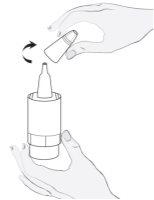
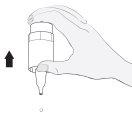 2
2